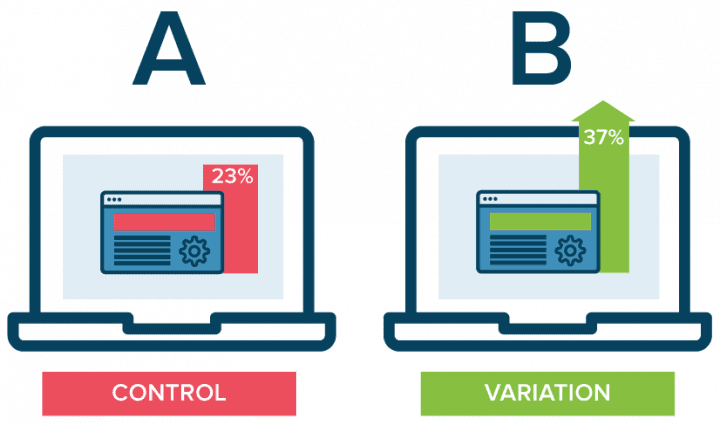What is the Difference Between Multivariate Testing and A/B Testing?
A/B Testing
In digital marketing, there is another kind of testing: A/B testing, or split testing. In A/B testing, there is no more than one variation to test when optimizing the content on your website.
The metric of interest (i.e: conversion rate, bounce rate, etc.) is referenced across the original and the variation for a large sample of users. In this method, site visitors are shown either one version or the other. The users’ interaction with the variation and the original determine which version provides the better result.
Some elements that are tracked include what videos visitors watch, what buttons they click, whether or not they sign up for a newsletter or fill out a subscription form, and others.

A/B testing is highly useful, but it does come with some limitations.
The limitations are clear: A/B testing only allows for one variation to be tested against the original. With certain applications, such as Google Optimize, up to three variations can be tested; however, the more variations that are tested, the more dilute the probability of finding a clear winner in the experiment.
For those who want to be a bit more thorough in their tests, multivariate testing is the best option.
Multivariate Testing
Multivariate testing differs from A/B testing in one key way: you can measure more variations of a single webpage across multiple variables and still generate accurate results.
The idea is essentially the same, but the higher number of variables reveals much more information over time. Instead of getting two ideas of how a webpage works, you are privy to how the changed variables interact with one another, how users react to a number of changes, and how these changes positively or negatively impact those user interactions with your website.
Multivariate testing is often viewed as more advantageous than split testing because it offers a large amount of data and provides higher quality insights in return.
You can easily identify what areas need to be redesigned for the most impact with site visitors, which can increase online business considerably. This data is especially helpful when designing new and future pages: landing pages, blogs, social media posts, and more.






